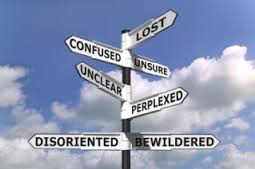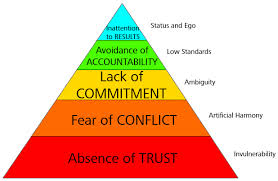Context
 The Five Dysfunctions of a Team is a business book by consultant and speaker Patrick Lencioni. It describes the many pitfalls that teams face as they seek to “row together”.
The Five Dysfunctions of a Team is a business book by consultant and speaker Patrick Lencioni. It describes the many pitfalls that teams face as they seek to “row together”.
The book explores the fundamental causes of organisational politics and team failure. It outlines the root causes of politics and dysfunction on the teams where people work, and the keys to overcoming them. Counter to conventional wisdom, the causes of dysfunction are both identifiable and curable. However, they don’t die easily. Making a team functional and cohesive requires levels of courage and discipline that many groups cannot seem to muster.
Lencioni suggests the reasons why teams are dysfunctional is because they are made up of human beings with varied interests and frailties. When you put them together and leave them to their own devices, even the most well-intentioned people will usually deviate toward dysfunctional, unproductive behaviour. And because most Leaders and Managers are not schooled in the art of building teams, small problems are left untreated and spiral further and further into ugliness and politics.
The Model
 Dysfunction 1: Absence of Trust
Dysfunction 1: Absence of Trust
The fear of being vulnerable with team members prevents the building of trust within the team.
Ways of approaching interventions Lencioni suggests are:
- Sharing personal histories
- The team looking at team effectiveness exercises
- The team completing personality and behavioural profiles
- Individuals getting 360 feedback
Dysfunction 2: Fear of Conflict
The desire to preserve artificial harmony stifles the occurrence of productive ideological conflict, and manifest themselves in veiled discussions and guarded comments. All strong relationships that last over time require productive conflict in order to grow
Intervention suggestions include:
- “Mining discussions”: the ability to extract buried disagreements and expose them. This may need outside support to go through with enough safety
- Real time permission; being uncomfortable is OK!
- Conflict assessment tools
Dysfunction 3: Lack of Commitment
The lack of clarity or buy-in prevents team members from making decisions they will stick to. Strong teams move forward with buy in from all, even those who disagree with the decision because they have aired opinions in passionate and open debate
Intervention suggestions include:
- Clear and honoured deadlines
- Contingency and worst case scenario analysis
- Review key decisions made and how these will be communicated consistently through the organisation
Dysfunction 4: Avoidance of Accountability
The need to avoid interpersonal discomfort prevents team members from holding one another accountable, and committing to a clear plan of action for the whole team and the individuals in the Team.
Intervention suggestions include:
- Clear publication of goals and standards
- Simple and regular progress reviews
- Team rewards
Dysfunction 5: Inattention to Results
The pursuit of individual goals and personal status erodes the focus on collective success; inattention to results occurs when team members put their individual needs of the needs of their area of the business above the collective goals of the Team.
Intervention suggestions include:
- Public declaration of results
- Results based rewards
Resources
- Conquer_Team_Dysfunction from the Table Group
- The_Five_Dysfunctions_of_a_Team
- Practical Team Exercise: Team_Effectiveness_Exercise








